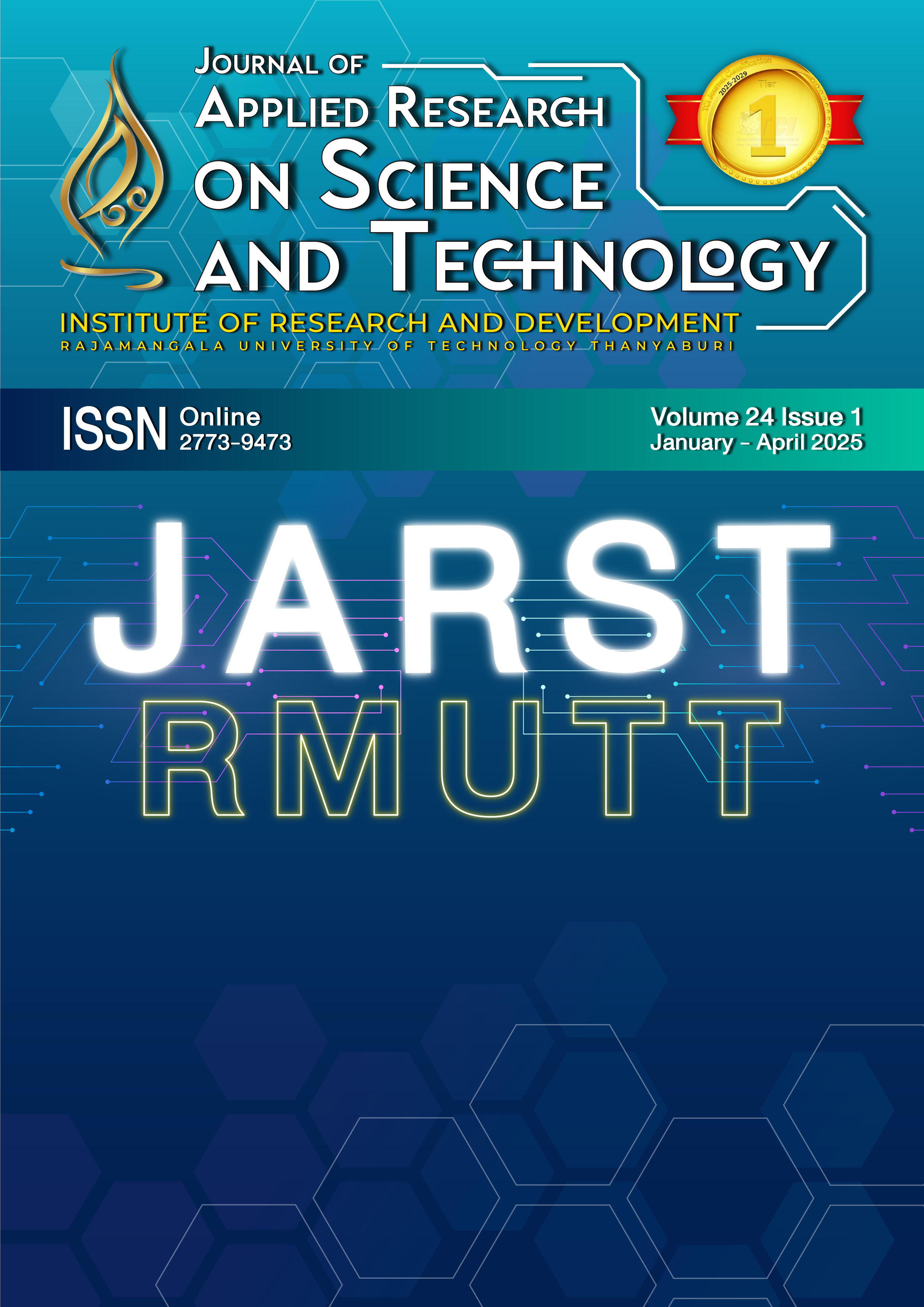Exploring the design and construction techniques of post-tensioned slabs
Main Article Content
Abstract
This research aims to: 1. Study the post-tension concrete floor type. 2. Study the case study of the building construction process using post-tension concrete floors by studying the plans and construction steps of post-tension concrete floors from studying the manuals and documents for the construction of prestressed concrete floors, applying the knowledge gained from working and learning on-site to understand the characteristics, types, and plans of prestressed concrete floors and the construction steps of prestressed concrete floors. The results of this research provide information on the plans and steps in the construction of post-tension concrete floors, construction supervision, management to meet the specified time frame, various construction problems and solutions, and the development of knowledge and skills in construction supervision for future use. In conclusion, understanding the work process, construction process control methods, and inspection of various post-tension concrete floor constructions can increase work efficiency and reduce labor costs, time, and damage costs, such as contracting parties for breaches of contract. It was found that the advantages of the post-tension floor system are more floors at the same building height and less wind load at the same number of floors because it can improve long-term performance compared to traditional reinforced concrete and beam-slab systems. In addition, factors that affect the useful labor utilization ratio consist of 4 factors: complexity of building design, work items or work steps that make work difficult; use of appropriate tools and machinery to facilitate work and reduce labor waiting time; use of various innovations or substitute materials to help reduce time in work steps; arranging a team of workers that is appropriate for the size and type of work. These factors directly affect the ratio of useful workers. Results from this research Can be used to improve construction processes and inspection, Including selecting concrete materials to increase efficiency.
Article Details

This work is licensed under a Creative Commons Attribution-NonCommercial-NoDerivatives 4.0 International License.
References
Home - We Love Steel Construction [Internet]. We Love Steel Construction - SSI Steel Construction; 2023 [cited 2024 Apr 15]. Available from: https://welovesteelconstruction.ssi-steel.com
Moothong N. Technology of post-tensioned prestressed concrete in Thailand, case studies of bridges and buildings. Nonthaburi: Ministry of Science and Technology.
Ekaphong T. Study of construction productivity of prestressed concrete floors in high-rise buildings [dissertation]. Bangkok: Department of Civil Engineering, King Mongkut's University of Technology North Bangkok.
Cracking of concrete [Internet]. Prince of Songkla University, Department of Civil Engineering. Available from: http://www.phigroup.co.uk/tags/concrete-panel/concretepanel.
Simapichet I. Comparison Study Post Tension Concrete Slab Vs Conventional Concrete Slab, Project 5-Floor Apartment in Samutsakorn Province [dissertation]. Bangkok: Department of Civil, Environmental and Sustainability Engineering, Siam University; 2018.
Pantharat N. Design of prestressed concrete [dissertation]. Bangkok: Faculty of Engineering, Sripathum University; 1998.
Kanchanalai T. Design of prestressed concrete. Bangkok: Kasetsart University Library.
SNP POST TENSION CO., LTD. Design of post-tension floor to withstand lateral force [Internet]. Available from: http://www.snp-precast.snp-post.com
Al-Baijat HM. The Use of Basalt Aggregates in Concrete Mixes in Jordan. Jordan Journal of Civil Engineering. 2008;2(1):63-70.
Alexander MG, Mindess S. Aggregates in Concrete. London: Taylor & Francis Cop; 2005.
ASTM Standard C469/C469M-14. Standard Test Method for Static Modulus of Elasticity and Poisson's Ratio of Concrete in Compression. In: Annual Book of ASTM Standards. vol. 09.49. West Conshohocken: ASTM International; 2014.
de Grazia MT, Sanchez LFM, Romano RCO, Pileggi RG. Investigation of the use of continuous particle packing models (PPMs) on the fresh and hardened properties of low-cement concrete (LCC) systems. Constr Build Mater. 2019;195:524-36.
Klein NS, Lenz LA, Mazer W. Influence of the granular skeleton packing density on the static elastic modulus of conventional concretes. Constr Build Mater. 2020;242:118086.
Haque MB, Tuhin IA, Farid MSS. Effect of aggregate size distribution on concrete compressive strength. SUST journal of science and technology. 2012;19(5):35-9.
The prestressed concrete floor design line. Construction documents and reports of the elderly accommodation project, The Senizens. Bangkok: BCC Construction Co., Ltd. and C-Post Co., Ltd.


